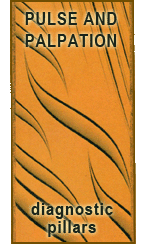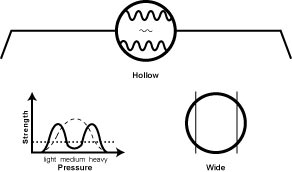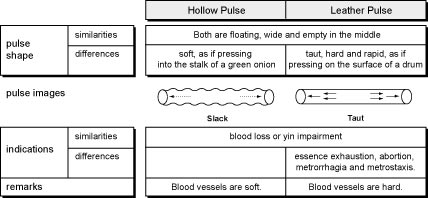The Hollow, Scallion Stalk, Onion Pulse (Kou Mai)

Hollow Pulse (?? Kou Mai, scallion stalk, onion)
Key points: floating, wide, slack, with an obscure center
Indications: (forceless) loss of blood: sudden loss of blood, the yin cannot fill the center or anchor the yang.
(Rapid) loss of yin: yin can’t fill center, yang floats, and deficiency heat leads to a rapid pulse.
Explanation: this is basically a variation or further exasperation of the leather pulse. I think of the leather pulse as being what happens to the pulse immediately following a profound loss of blood, while the hollow pulse comes after the leather pulse when the qi is beginning to wane. The key difference is that in the leather pulse, the qi is still very strong but in the hollow www.health-canada-pharmacy.com/tramadol.html pulse, the qi is beginning to feel deficient because it is catching up with the fact that the blood, its mother, is deficient. The key difference between the hollow pulse and the leather pulse is that the hollow pulse indicates a loss or deficiency of yin and blood, while the leather pulse indicates a deficiency of blood and/or jing. There’s a very thin line between these two pulses and their indications. Where does blood-jing end and blood-yin begin? Really hard to say. (Perhaps that’s the clue, hard = leather, slack = hollow.)

The Hollow Pulse

Comparison of Leather and Hollow Pulses
Next: we very carefully… with plenty of consideration… describe the slow pulse.
 Last modified: August 9, 2009
Last modified: August 9, 2009  Tags: Diagnosis, Palpation · Posted in: Pulse Class, Pulse-Palpation
Tags: Diagnosis, Palpation · Posted in: Pulse Class, Pulse-Palpation
